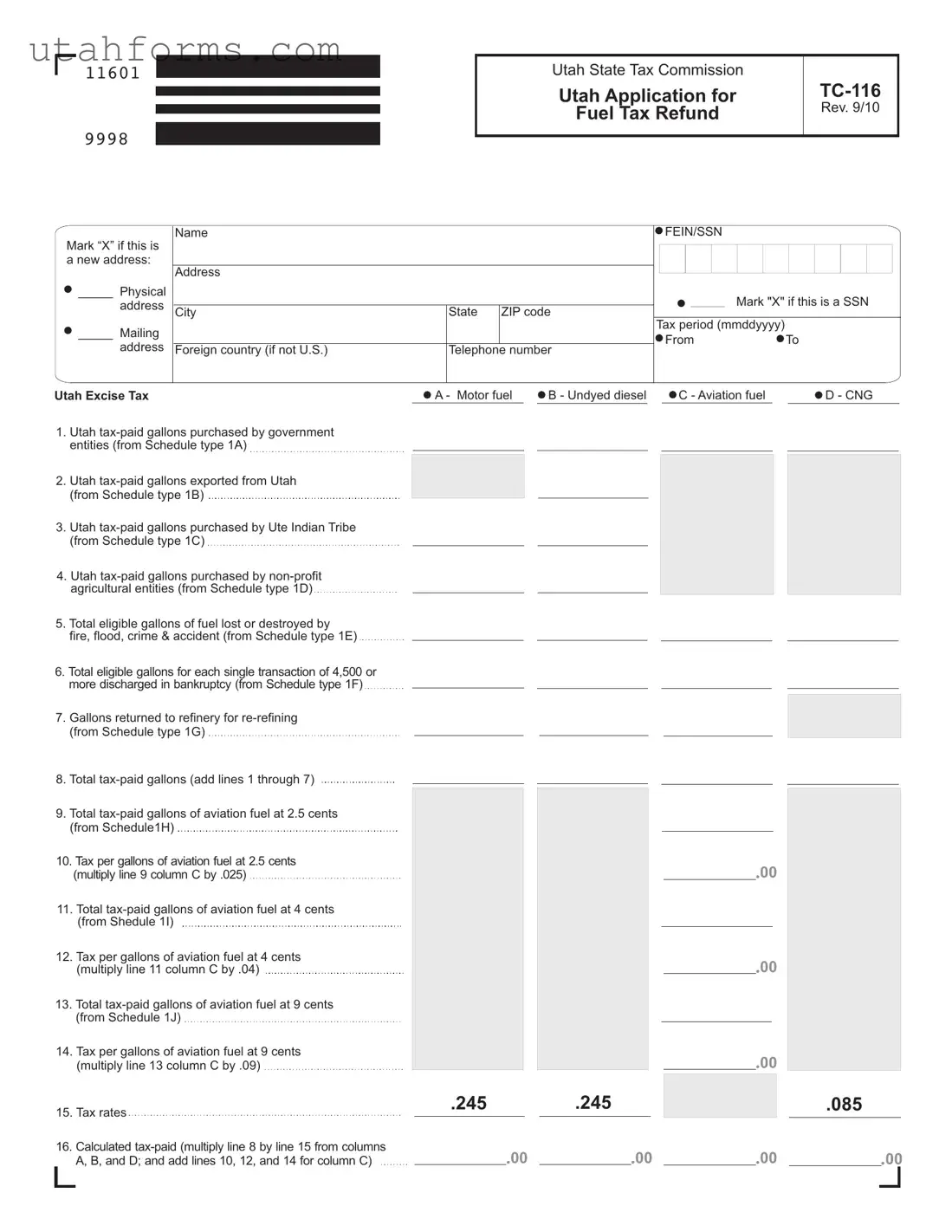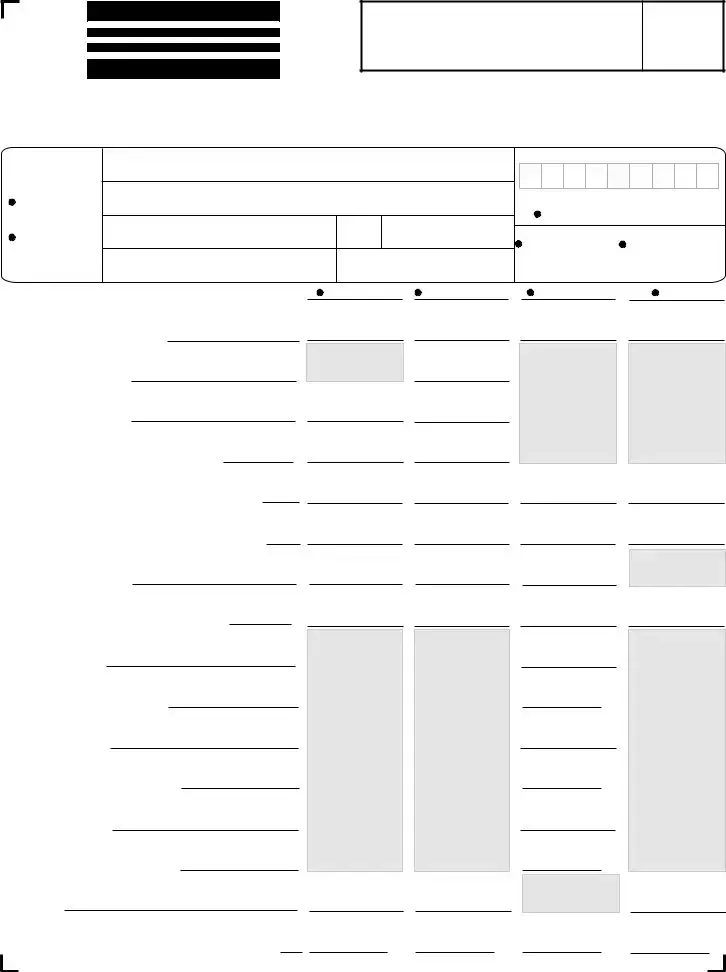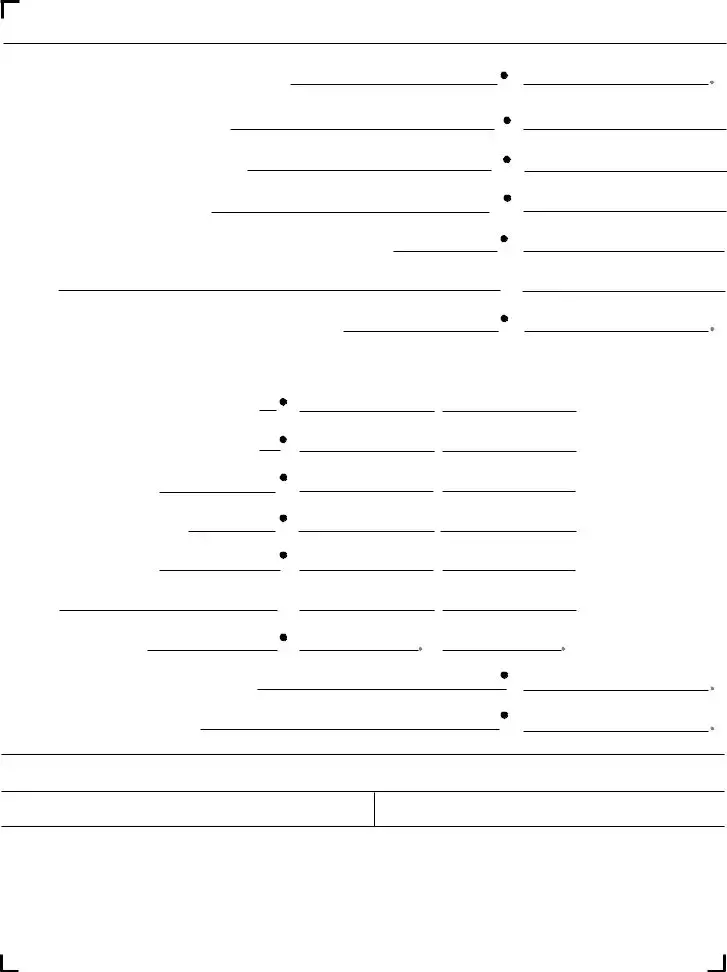What is the Utah TC-116 form used for?
The Utah TC-116 form serves as an application for a fuel tax refund. It is utilized by individuals or entities that qualify under specific conditions, such as government entities, tribes, non-profit agricultural entities, or situations involving lost, destroyed, or discharged fuel, to claim a refund on taxes paid on fuel within the state of Utah.
Who can apply for a fuel tax refund using the TC-116 form in Utah?
Entities that are eligible to apply for a fuel tax refund using the TC-116 form in Utah include government entities, the Ute Indian Tribe, non-profit agricultural organizations, and individuals or entities that have experienced fuel losses due to fire, flood, crimes, accidents, or bankruptcy. It is also applicable for fuel returned to refineries for re-refining and for exports outside of Utah.
How are the refundable gallons of fuel calculated on the TC-116 form?
Refundable gallons of fuel are calculated by totaling the tax-paid gallons purchased or acquired under the categories listed on the form. This includes fuel purchased by government entities, exported, purchased by the Ute Indian Tribe, non-profit agricultural entities, gallons lost or destroyed, discharged in bankruptcy, and gallons returned for re-refining. Specific schedules provide detailed information for each category, and the total from these schedules is summed to determine the refundable amount.
What types of fuel are eligible for a refund on the TC-116 form?
The TC-116 form accommodates requests for refunds on several types of fuel, including motor fuel, undyed diesel, aviation fuel, and compressed natural gas (CNG). Each type has its own tax rates and conditions for eligibility under the refund program.
Can you claim a fuel tax refund for aviation fuel on the TC-116 form?
Yes, aviation fuel is eligible for a tax refund under specific conditions outlined in the TC-116 form. There are separate sections for calculating the tax-paid gallons of aviation fuel at differing tax rates, allowing applicants to claim refunds on tax payments made for aviation fuel used under eligible circumstances.
What is the Utah Environmental Assurance Fee, and how is it related to the TC-116 form?
The Utah Environmental Assurance Fee is an additional fee applied to certain fuel transactions within the state. On the TC-116 form, there are sections dedicated to calculating the refund for this fee if paid on gallons that were exported from Utah, placed in nonparticipating tanks, or for repackaged oil. This fee is part of the overall calculation for determining the total refund amount on eligible fuel transactions.
How do you determine the tax rate for calculating your refund on the TC-116 form?
The tax rate for calculating your refund on the TC-116 form depends on the type of fuel and the specific use or situation that qualifies for the refund. The form includes predefined tax rates for different categories of fuel and purposes, such as motor fuel, undyed diesel, and aviation fuel at varying rates based on the schedule applicable to the refund claim.
What information do you need to complete Schedule types for the TC-116 form?
To complete the Schedule types for the TC-116 form, the applicant needs to provide detailed information including the purchase date, invoice number, facility or terminal number (if applicable), airport code (for aviation fuel), supplier's name, and the total tax-paid gallons. This information is essential to accurately calculate the refundable amount for each qualified transaction.
How does the Navajo Nation refund work on the TC-116 form?
The Navajo Nation refund section of the TC-116 form allows for reporting of gallons delivered to the non-Utah portion of the Navajo Nation that are subject to Utah fuel tax. Applicants can claim a refund for these gallons by subtracting the gallons delivered outside of Utah from the total taxable gallons reported, applying a specific credit rate, and calculating the net taxable gallons available for refund based on the appropriate tax rate.
What is the significance of certifying the TC-116 form?
Certifying the TC-116 form is a declaration by the applicant that all information provided on the form and accompanying schedules is accurate to the best of their knowledge. It confirms the applicant's eligibility for the refund claimed and acknowledges their understanding that providing false information may result in penalties, including denial of the refund request. This certification is a critical part of ensuring the integrity of the refund application process.


 FEIN/SSN
FEIN/SSN 00
00 00
00 00
00 00
00 00
00 00
00 00
00 00
00 00
00 00
00 00
00 00
00
